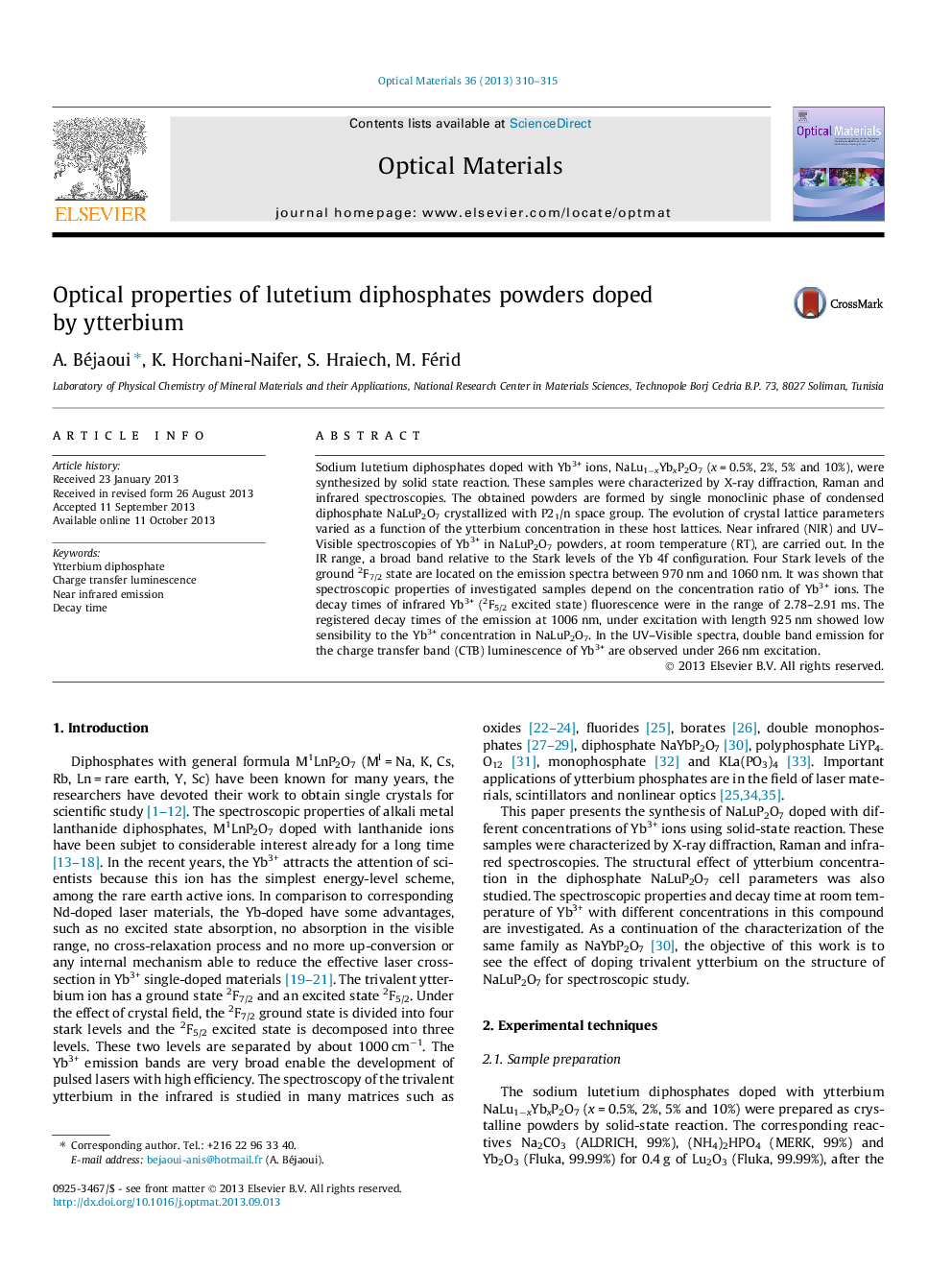| Article ID | Journal | Published Year | Pages | File Type |
|---|---|---|---|---|
| 1494543 | Optical Materials | 2013 | 6 Pages |
•NaLu1−xYbxP2O7 (x = 0.5%, 2%, 5% and 10%) were prepared by solid-state reaction.•Luminescent properties depend on the Yb3+ concentration.•Low re-absorption of the 0-phonon transition was registered.•The CTB luminescence of Yb3+:NaLuP2O7 has been investigated at room temperature.
Sodium lutetium diphosphates doped with Yb3+ ions, NaLu1−xYbxP2O7 (x = 0.5%, 2%, 5% and 10%), were synthesized by solid state reaction. These samples were characterized by X-ray diffraction, Raman and infrared spectroscopies. The obtained powders are formed by single monoclinic phase of condensed diphosphate NaLuP2O7 crystallized with P21/n space group. The evolution of crystal lattice parameters varied as a function of the ytterbium concentration in these host lattices. Near infrared (NIR) and UV–Visible spectroscopies of Yb3+ in NaLuP2O7 powders, at room temperature (RT), are carried out. In the IR range, a broad band relative to the Stark levels of the Yb 4f configuration. Four Stark levels of the ground 2F7/2 state are located on the emission spectra between 970 nm and 1060 nm. It was shown that spectroscopic properties of investigated samples depend on the concentration ratio of Yb3+ ions. The decay times of infrared Yb3+ (2F5/2 excited state) fluorescence were in the range of 2.78–2.91 ms. The registered decay times of the emission at 1006 nm, under excitation with length 925 nm showed low sensibility to the Yb3+ concentration in NaLuP2O7. In the UV–Visible spectra, double band emission for the charge transfer band (CTB) luminescence of Yb3+ are observed under 266 nm excitation.
Graphical abstractFigure optionsDownload full-size imageDownload high-quality image (159 K)Download as PowerPoint slide
